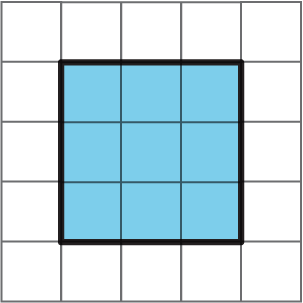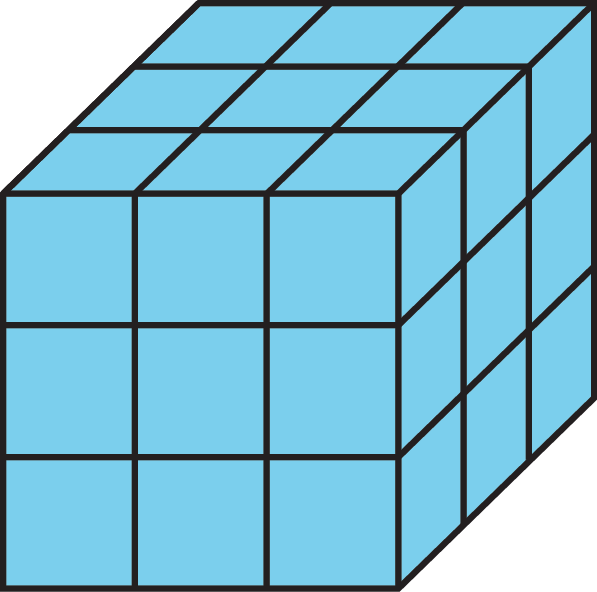Lesson 11
Squares and Cubes
Let’s investigate perfect squares and perfect cubes.
11.1: Perfect Squares
- The number 9 is a perfect square. Find four numbers that are perfect squares and two numbers that are not perfect squares.
- A square has side length 7 in. What is its area?
- The area of a square is 64 sq cm. What is its side length?

11.2: Building with 32 Cubes
Use the 32 snap cubes in the applet’s hidden stack to build the largest single cube you can. Each small cube has side length of 1 unit.
- How many snap cubes did you use?
- What is the side length of the cube you built?
- What is the area of each face of the built cube? Show your reasoning.
- What is the volume of the built cube? Show your reasoning.
This applet has a total of 64 snap cubes. Build the largest single cube you can.
- How many snap cubes did you use?
- What is the edge length of the new cube you built?
- What is the area of each face of this built cube? Show your reasoning.
- What is the volume of this built cube? Show your reasoning.
11.3: Perfect Cubes
- The number 27 is a perfect cube. Find four other numbers that are perfect cubes and two numbers that are not perfect cubes.
- A cube has side length 4 cm. What is its volume?
- A cube has side length 10 inches. What is its volume?
- A cube has side length \(s\) units. What is its volume?

11.4: Introducing Exponents
Make sure to include correct units of measure as part of each answer.
- A square has side length 10 cm. Use an exponent to express its area.
- The area of a square is \(7^2\) sq in. What is its side length?
- The area of a square is 81 m2. Use an exponent to express this area.
- A cube has edge length 5 in. Use an exponent to express its volume.
- The volume of a cube is \(6^3\) cm3. What is its edge length?
- A cube has edge length \(s\) units. Use an exponent to write an expression for its volume.
The number 15,625 is both a perfect square and a perfect cube. It is a perfect square because it equals \(125^2\). It is also a perfect cube because it equals \(25^3\). Find another number that is both a perfect square and a perfect cube. How many of these can you find?
Summary
When we multiply two of the same numbers together, such as \(5\boldcdot 5\), we say we are squaring the number. We can write it like this: \(\displaystyle 5^2\)
Because \(5\boldcdot 5 = 25\), we write \(5^2 = 25\) and we say, “5 squared is 25.”
When we multiply three of the same numbers together, such as \(4\boldcdot 4 \boldcdot 4\), we say we are cubing the number. We can write it like this: \(\displaystyle 4^3\)
Because \(4\boldcdot 4\boldcdot 4 = 64\), we write \(4^3 = 64\) and we say, “4 cubed is 64.”
We also use this notation for square and cubic units.
- A square with side length 5 inches has area 25 in2.
- A cube with edge length 4 cm has volume 64 cm3.
To read 25 in2, we say “25 square inches,” just like before.
The area of a square with side length 7 kilometers is \(7^2\) km2. The volume of a cube with edge length 2 millimeters is \(2^3\) mm3.
In general, the area of a square with side length \(s\) is \(s^2\), and the volume of a cube with edge length \(s\) is \(s^3\).
Glossary Entries
- cubed
We use the word cubed to mean “to the third power.” This is because a cube with side length \(s\) has a volume of \(s \boldcdot s \boldcdot s\), or \(s^3\).
- exponent
In expressions like \(5^3\) and \(8^2\), the 3 and the 2 are called exponents. They tell you how many factors to multiply. For example, \(5^3\) = \(5 \boldcdot 5 \boldcdot 5\), and \(8^2 = 8 \boldcdot 8\).
- squared
We use the word squared to mean “to the second power.” This is because a square with side length \(s\) has an area of \(s \boldcdot s\), or \(s^2\).